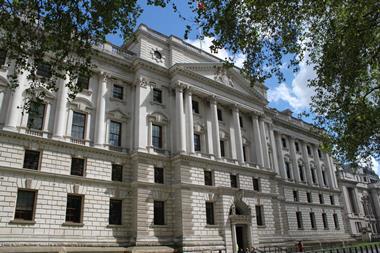Danish pension funds have welcomed this morning’s announcement from the country’s central bank that the state will launch its first-ever green bonds next month.
Danmarks Nationalbank announced the Kingdom of Denmark would open a green bond on 19 January, with a coupon rate of 0.00% and maturity on 15 November 2031.
The expected issuance volume would be published in connection with the announcement of the central government’s borrowing strategy in December, the bank said.
The volume would be based on the amount of eligible green expenditures, which would constitute an upper ceiling, it said, while taking the overall borrowing strategy into account.
Poul Kobberup, chief investment officer of Danica Pension, said: “It is very positive that Denmark is now issuing green bonds. It is an initiative that we welcome in every way and that we will look at with great interest.”
He said the news was really positive for the market for green investments.
“In particular, the bonds will contribute to the green transition within the energy and transport sector, which is among the sectors where it is most important that we make efforts to reduce CO2 emissions.
“At Danica Pension, we have now invested approximately DKK33bn (€4.4bn) in the green transition, of which DKK17bn is in green bonds, and it is positive that this investment opportunity is now coming to Denmark as well,” Kobberup said.
Industry association Insurance and Pension Denmark (IPD) said the sector had been waiting for news of the upcoming green bond issue for a long time.
Tom Vile Jensen, deputy director of IPD, said: “We are investing much more in green bonds today than just a few years ago. That development shows that the potential is very large. That’s why we welcome the government’s initiative.”
Since 2019, IPD said, its members had increased their investments in green bonds – from both corporate and government issuers – to DKK61.1bn from DKK6.5bn worldwide.
Vile Jensen said the emergence of Danish government green bonds meant it would now be easier for pension companies to invest in a green way.
In its announcement, the central bank said eligible green expenditures under the Kingdom’s green bond framework were evaluated and selected on the basis of the definitions and criteria in the EU Taxonomy, as adopted by the Commission on 4 June 2021.
Eligible green spending under the Danish framework included the production of renewable energy, including wind and solar energy, and the green transition of the Danish transport sector, according to the central bank.
It also said the green bond would be issued as a ”twin bond” in line with the concept introduced by Germany in 2020.
“This implies that the green bond will be issued with the same financial characteristics as one of the central government’s existing conventional on-the-run issues,” Danmarks Nationalbank said.
It said this concept supported liquidity in the green bond, because investors would be able to switch the 10-year green twin bond at any time to the corresponding and more liquid conventional 10-year twin bond one-to-one.
“However, investors will not be able to switch the conventional twin bond to the corresponding green twin bond,” the bank said.
The twin-bond format differs from the model the Danish central bank was working on for some time to address the problem of market liquidity in what would be a relatively limited market – namely a method where the green premium is traded separately from the sovereign debt.
IPD’s Vile Jensen said: “It is great that Danmarks Nationalbank has chosen a twin-bond model that is already known and works in Germany,” adding that it was also important the domestic issuance was following the international standards for green bonds.









No comments yet